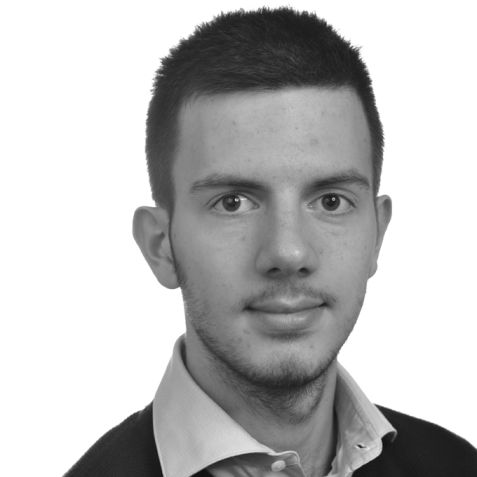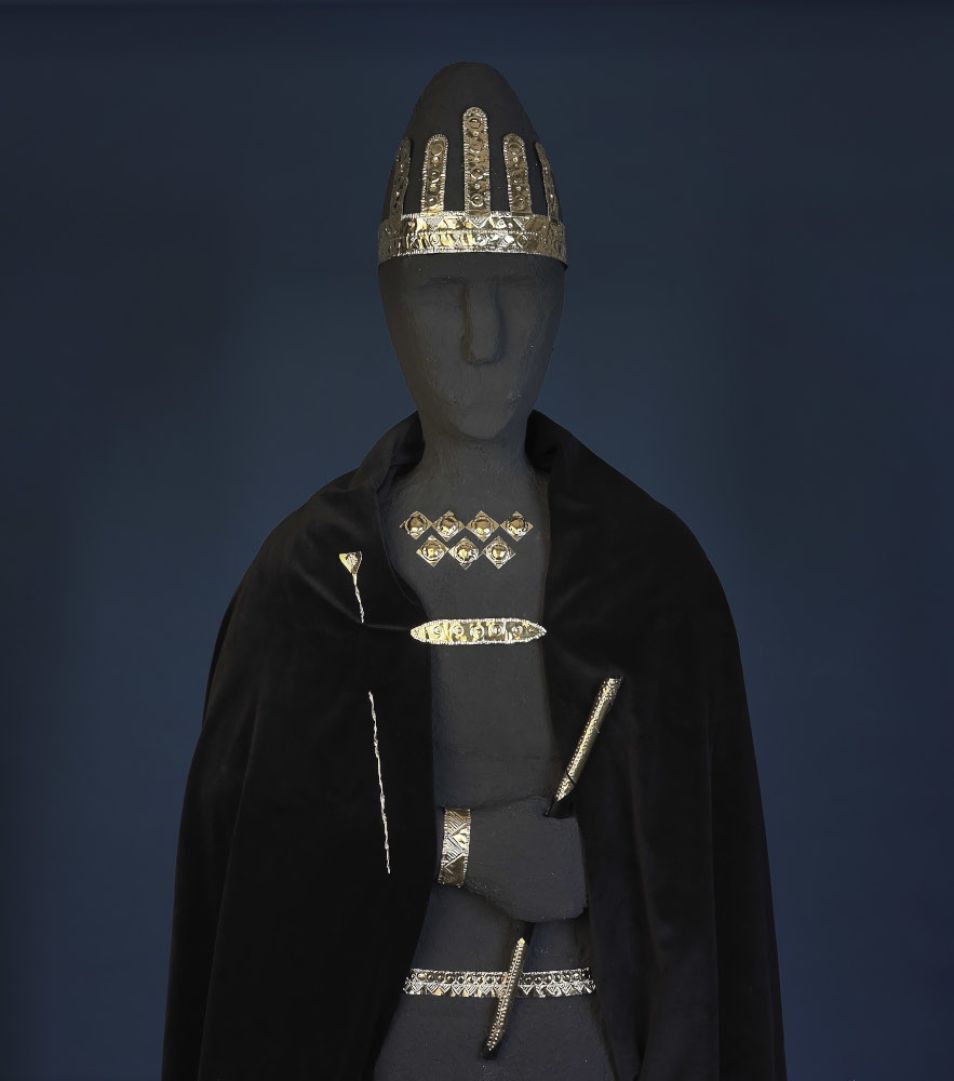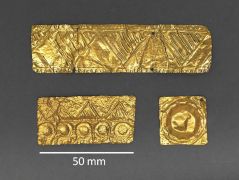MLZ is a cooperation between:
 > Technische Universität München
> Technische Universität München > Helmholtz-Zentrum Hereon
> Helmholtz-Zentrum Hereon
 > Forschungszentrum Jülich
> Forschungszentrum Jülich
MLZ is a member of:
 > LENS
> LENS > ERF-AISBL
> ERF-AISBL
MLZ on social media:

MLZ (eng)
Lichtenbergstr.1
85748 Garching
Archaeological sensation or brilliant deception
Two experts in archaeology have been debating for years about the authenticity of gold artifact discoveries in Bernstorf, Germany. Professor Rupert Gebhard, head of the Bavarian State Archaeological Collection in possession of the artifacts, is convinced that these gold relics from the Bronze Age are indeed genuine. On the other hand, Professor Ernst Pernicka of the Curt-Engelhorn-Center of Archaeology, suspects they are fake. The accusation weighs heavily, since it would imply a substantial fraud of around 384,000 Euros. Dozens of investigations have only further fueled the dispute. Finally, last year Professor Gebhard turned to the neutron source in Garching in an attempt to resolve the matter.
The story begins in 1998, when amateur archaeologists Manfred Moosauer and Traudl Bachmaier found several preserved man-made items in Bernstorf, a village near Freising (Bavaria): A diadem, belt, several pins, and a charred wooden stick wrapped in gold. It was previously known that the excavation site used to be a Bronze Age fortification. The decorations found there are similar to other Bronze Age artifacts from that region, but also resembled those from the Mediterranean area. The archaeological significance of the trove was promptly recognized, as it confirms the cultural exchange between Bavaria and the ancient civilizations of Greece. For this reason, the Bavarian Archaeological State Collection in Munich purchased the artifacts for 750,000 DM.
The unusually high degree of purity “looks suspicious”
Already the first analyses of the gold in 1998 showed an unusually high degree of purity. In 2014, Professor Ernst Pernicka of the Curt-Engelhorn-Center of Archaeology determined that the gold was 99.99% pure, a result subsequently confirmed by the Federal Institute for Materials Research. Prof. Pernicka has a background in chemistry and has utilized this expertise effectively in archeological investigations. “The gold is clearly a fake” he says. “This high degree of purity can only be found in modern industrial gold and can only be achieved with the help of electrolysis,” he explains in his allegation. Professor Gebhard, a well-known archaeologist and head of the Bavarian State Archaeological Collection, defends the authenticity of the gold treasures by referring the cementation process, a method known to have been used in antiquity to increase the purity of gold. “We must not ignore all other evidence in favor of authenticity because of one counter-argument,” he explains. This evidence comes from several various methods he used to analyze the gold findings.

Dr. Weimin Gan at the instrument STRESS-SPEC, who analysed the gold artifacts. © Fotos: Weimin Gan / HZG und Astrid Eckert/TUM, Fotomontage: Reiner Müller, FRM II/ TUM
Same investigation – opposing conclusions
Examples of evidence that support the authenticity of the artifacts include the charred wooden stick, which two independent laboratories were able to date back to the Bronze Age using the C-14 method. In addition, the gold surfaces on the artifacts exhibit some distinct secondary structures that are thought to originate from the excrement of subterranean bacteria. Professor Gebhard and his colleague Professor Rüdiger Krause from the Goethe University in Frankfurt have summarized these and other scientific works in a book of about 300 pages in order to provide a comprehensive account consistent with all results. However, Professor Pernicka remains unimpressed. According to him, it is not difficult to find a suitable piece of wood in the excavation site, and the evidence of bacterial deposits is purely hypothetical. Prof. Pernicka claims that brush marks are much more probable. In contrast, Professor Gebhard points out that patterns from brush marks would be quite distinct from those made by bacteria. There is a similar dynamic with the other investigations presented in the book: the same results are interpreted in opposite ways by both sides and the dispute has been going back and forth for several years.
Neutrons light the way with texture analysis
Professor Gebhard has brought another key material property into play: texture. Together with Friedrich Wagner, now Professor Emeritus of Physics at the Technical University of Munich, they investigated the texture of the Bernstorf gold at the STRESS-SPEC instrument of the Research Neutron Source Heinz Maier-Leibnitz (FRM II) in order to draw conclusions about the manufacturing process. In order to do this, they utilized processed modern gold sheets to make comparisons with the gold from Bernstorf. They hammered, rolled (with a single and a double roller), and then heated the gold. Dr Michael Hofmann and Dr Weimin Gan, scientists at the STRESS-SPEC instrument, examined the gold with neutron scattering. “No one has ever done texture studies on gold to find out how it was produced,” says TUM-scientist Hofmann. In this respect, the scientific importance of this investigation goes beyond the gold discovery at Bernstorf. The two professors want to make further use of it in the future for the comparison ancient and modern manufacturing techniques.
The dispute continues – first with a new investigation at FRM II
Further discussion about the results is ongoing: “We cannot clearly identify any manufacturing process. But the Bernstorf gold has certainly been exposed to heat,” says Weimin Gan, who is employed with the Helmholtz-Zentrum Geesthacht. He arrives to that conclusion because both the hammered and the double-rolled samples have a completely different structure than the gold artifacts, but develop similar structures when they are heated afterwards.
Professor Pernicka views these results as a confirmation of his allegations. To him, the similarity between the gold artifacts and the rolled benchmark samples supports his position that the artifacts are fake. After all, hammering was the most common working method in the Bronze Age. “With this, he only picks out the rolled plates,” Professor Gebhard counters. For Professor Wagner, something else is crucial: none of the comparison plates has such a clean structure as the Bernstorf gold. If one could replicate these structures, then we would learn more details about the manufacturing methods that were utilized in fabricating the artifacts. But how to do this, exactly? “That is the big open question we are facing now,” says Professor Wagner.
Prof. Wagner is currently evaluating the results of a second measurement, which he also carried out at STRESS SPEC. This time he has prepared more comparison sheets for the purpose of answering the question above. In the meantime, anyone who is interested can get their own impression of this gold artifact discovery and visit the “Bronze Age Bayern Museum” in Kranzberg. There at least one is convinced of its authenticity and presents Bernstorf as the junction of the Bronze Age in Bavaria.
__________________________________________________________________________________________
More information:
- Website of the Bavarian State Archaeological Collection: https://www.archaeologie-bayern.de/en/english-home/
- Website of the Curt-Engelhorn-Center of Archaeometry: https://www.ceza.de/en
- Website of the Bronze Age Bayern Museum: https://bronzezeit-bayern-museum.de/

Georgios Mantzaridis
Press & Public Relations
FRM II
MLZ is a cooperation between:
 > Technische Universität München
> Technische Universität München > Helmholtz-Zentrum Hereon
> Helmholtz-Zentrum Hereon
 > Forschungszentrum Jülich
> Forschungszentrum Jülich
MLZ is a member of:
 > LENS
> LENS > ERF-AISBL
> ERF-AISBL
MLZ on social media:




